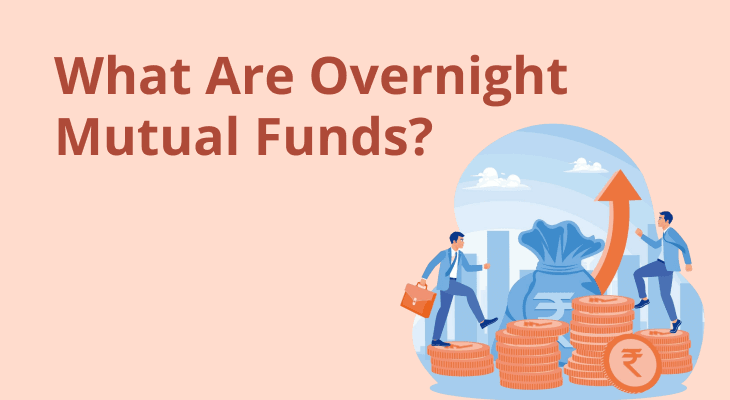
What is Exit Load?
Investing in mutual funds is a strategy that can potentially help your money grow over time. However, it's crucial to comprehend the different facets that can influence your investment journey. One such crucial aspect is the concept of "exit load." While the term might initially seem unfamiliar, gaining a clear understanding of its meaning and implications is particularly important, especially for individuals dealing with mutual funds in the context of India's financial landscape.
What Is an Exit Load?
At its core, an exit load in a mutual fund refers to a fee that investors might be required to pay if they decide to redeem or sell their mutual fund units within a specific period subsequent to purchasing them. In essence, this fee acts as a cost that is imposed by the mutual fund company. Its purpose is to discourage investors from making hurried withdrawals of their funds. By implementing exit loads, mutual fund houses aim to encourage investors to remain committed to their investments for a predefined duration, commonly referred to as the "exit load period."
Understanding the Rationale Behind Exit Loads
The primary objective behind the implementation of exit loads is to safeguard the interests of long-term investors while also discouraging short-term trading practices that could potentially have a detrimental impact on the overall performance of the mutual fund. By imposing a fee on early redemptions, mutual fund companies aim to deter investors from making impulsive decisions that are influenced by short-term fluctuations in the market. This mechanism serves to promote stability within the fund, enabling fund managers to effectively execute their strategies without facing frequent disruptions caused by abrupt withdrawals.
Deciphering Exit Load Calculation
The calculation of exit loads is based on a percentage of the redemption amount or the net asset value (NAV) at the time of withdrawal. The actual percentage can exhibit significant variation from one mutual fund to another, and it is generally higher if an investor opts to redeem their units during the early stages of the exit load period. The exit load period itself is predetermined by the mutual fund house and can span from just a few days to several years.
Calculating Exit Load in Mutual Funds
The process of calculating exit load in mutual funds is relatively straightforward. Let's consider a scenario where you have invested in a mutual fund and are contemplating redeeming your units prior to the expiration of the exit load period. The first step involves determining the applicable exit load percentage. Subsequently, you would multiply this percentage by the redemption amount or the NAV on the day of redemption. The outcome of this calculation represents the exit load that you will be required to pay. It's important to note that the exit load is subtracted from the amount you receive upon redeeming your investment.
Consider An Example:
Imagine you've invested INR 50,000 in a mutual fund scheme with an exit load of 1% if redeemed within 6 months. Should you decide to redeem your investment after only 4 months, calculate the exit load as follows:
Exit Load = Redemption Amount × Exit Load Percentage
Here, the redemption amount is INR 50,000, and the exit load percentage is 1%. Therefore,
Exit Load = INR 50,000 × 0.01 = INR 500
This implies that you'll incur an exit load of INR 500 when redeeming your investment before the 6-month holding period.
Exit Loads on Different Types of Mutual Funds
Exit loads can significantly differ based on the specific type of mutual fund in which you are investing. Here is a breakdown of how exit loads may be structured for different types of mutual funds :
Debt Funds
These funds typically feature shorter exit load periods along with lower exit load percentages. This approach is underpinned by the fact that debt funds are geared toward delivering relatively stable returns over a comparatively shorter time horizon.
Equity Funds
On the contrary, equity funds are characterised by longer exit load periods when compared to debt funds. This distinction can be attributed to the higher volatility often associated with equity investments. Longer exit load periods are intended to encourage investors to embrace a long-term investment outlook.
Hybrid Funds
Hybrid funds, which encompass a blend of both debt and equity components, may feature exit load structures that vary. The exit load's composition could hinge on factors such as the fund's allocation between equity and debt, as well as the overarching investment strategy of the fund.
The Influence of Exit Loads on Investment Returns
An essential consideration involves assessing how exit loads can potentially impact your overall investment returns. The exit load percentage is subtracted from the proceeds generated through redemption, leading to a situation where the investor receives an amount that is less than the NAV. This reduction in returns can assume greater significance if an investor opts to redeem their units during the initial stages of the exit load period. Consequently, it becomes imperative to evaluate whether the prospective benefits of redeeming an investment early outweigh the impact of exit loads on overall returns.
Factors Shaping the Exit Load Landscape
Numerous factors play a role in shaping the exit load framework of a mutual fund:
Nature Of The Fund
As previously mentioned, different types of funds are associated with varying exit load periods and percentages. These distinctions are contingent upon the fund's investment objectives and its inherent risk profile.
Market Dynamics
Exit load periods and percentages may be subject to adjustment based on prevailing market conditions. During periods characterised by heightened market volatility, mutual fund houses might seek to promote longer holding periods in order to mitigate associated risks.
Investor Behavior Analysis
Mutual fund houses engage in an analysis of investor behaviour and trends to inform the determination of appropriate exit load structures. Should a particular fund witness frequent instances of redemptions, the exit load parameters might be recalibrated with the aim of discouraging short-term trading practices.
Conclusion
Obtaining a clear grasp of exit loads is indispensable when navigating the world of mutual fund investments. These loads are wielded as tools by mutual fund houses to foster a long-term investment perspective and to ensure the sustained stability of the fund. The imposition of a fee for early redemptions serves to discourage investors from succumbing to the allure of transient market trends and making rash decisions. As an investor, being well-versed in the exit load conditions associated with the mutual funds you are considering can empower you to make informed choices, align your investment strategy with your financial aspirations, and ultimately optimise the potential gains from your mutual fund investments.
SIPs let you invest small amounts regularly, making it easier to stay consistent with your goals. With time, your money grows faster through compounding, helping you get the most out of your investments. Try our SIP Calculator to see how your money can grow and make smarter plans for your future.
FAQ
What is the central objective of an exit load?
The primary goal of an exit load is to deter investors from hastily withdrawing their investments from mutual funds. This mechanism promotes a stable fund environment and safeguards the interests of long-term investors.
Can the percentages for exit loads change over time?
Yes, exit load percentages can be subject to revision by the mutual fund house. It is advisable to stay updated with the latest information provided by the fund house.
Are there any exceptions to paying exit loads?
Certain mutual funds may offer exemptions from exit loads under specific circumstances, such as unforeseen financial emergencies. It is recommended to review the fund's terms and conditions for detailed information.
How can one avoid incurring exit loads?
To circumvent the payment of exit loads, it is essential to redeem your mutual fund units only after the expiration of the designated exit load period. The specific duration of this period is stipulated by the fund house.
Can exit load percentages surpass the initial investment amount?
Yes, in certain instances, the exit load percentage can exceed the initial amount of investment. Consequently, it is crucial to acquaint yourself with the exit load structure of the fund before making an investment.
Can I transition between different mutual funds without being subjected to exit loads?
Some mutual funds permit investors to switch between funds within the same fund house without incurring exit loads. Nonetheless, it is essential to review the precise terms and conditions of the fund before initiating any such transitions.


